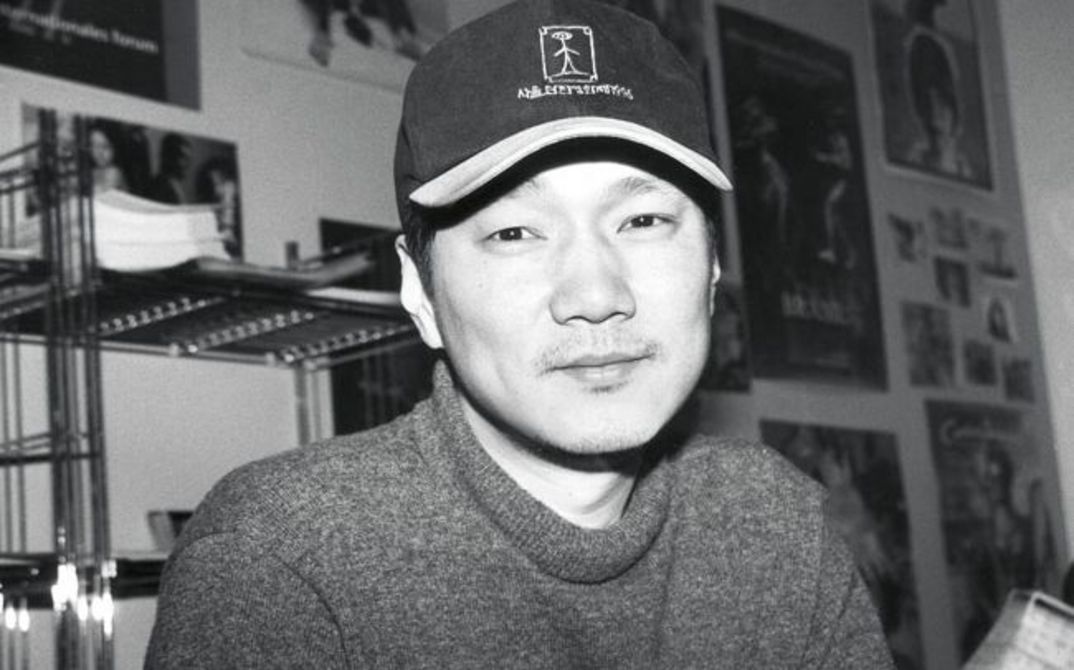Welcome to the Forum! My first question is about the title of the film.
The title should be read like this: there’s this boy who lives in the countryside and on one bright, sunny day, he hears this strange noise coming out of the well, so he approaches the well and sees that there’s this pig is drowning in it. And all the neighbours gather round to look at the pig drowning. This image came to me and somehow generated the same kind of feeling I wanted to create in this film. That’s how I chose the title.
I’d like to ask you about the characters in the film too: Are they people you know, you feel close to or can maybe identify with?
I don’t think there’s one entire character I identify with, someone I actually know. I chose this material intentionally so that it would be something that came from other people’s experience instead of my own, so as I went through the material I would react to the given situation in a certain way or from my individual point of view, such that all those important details would then come alive. This allows me to express what I have inside me instead of just drawing on the experiences of someone I know directly.
From what I gather, there were several screenwriters on the film, both you and several others. How did you collaborate?
I was working on the script for my first feature and my problem was I couldn’t really find the right balance in approaching the subject matter I’d chosen for this script. The subject matter I’d chosen before was too close to me, most of it came from my own personal experience, so I couldn’t really find the necessary distance to treat the material objectively. I wanted to be in a position where I could use this material with true creative freedom. I noticed that I wasn’t able to do it at the time, maybe in a few years I’ll be able to do it. So I decided to work with other people. I met these four people, most of whom are very young and novice scriptwriters without much experience. I asked them to work with me and we went to the countryside and talked about the characters in general and the storylines and the relationships. I asked them to write a one-day itinerary, what the characters do in the morning and in the afternoon, things like that. They didn’t have to think about dramatic structure. I asked them to write as faithfully as they could, according to their own imagination: if that were you, what would you do at 3 pm, something like that. They all came out with a 24-hour story, and I then combined them into one scenario, omitting some things, adding others.
As we here in Germany perhaps don’t know so much about Korean cinema, it’s not so easy to say whether your film represents something really new in relation to the rest of the films coming from Korea, or where you might take your inspiration from. Were you maybe influenced by cinemas from other countries, or is it your own experience or your own way of looking at reality which gave rise to the subject matter of your film?
I think every student is influenced by the masters from the past, but I think for me a more important part of being a filmmaker is that I experience certain creative impulses in everyday life, when I’m confronted with different things. People talk to one other, and I overhear the conversation, and then I have a feeling that I want to put what they’re saying into my film. I think it’s funny, or I think it’s very strange, so I want to use it. I wanted to do that and I think that’s what I’m going to do in my next film too, is to put such material into the structure of my film without distorting it too much, I need to think about how to go about it. I was sitting in the back of the cinema watching my film again, it’s been a long time since I watched it last. I realized there are so many more problems with the film than I first thought. There are problems with the rhythm, problems with the length of the shots and many, many other things, but that’s the direction I want to take for my next film.
I would also like to ask about the locations, how did you find them, how did you chose them?
Half of it is trial and error, and half of it is just luck. I didn’t have any specific place in mind, I just went around and found most the ordinary places I could, places without any embellishments, any symbolic connotation, without any special features at all. I wanted the places to look like nobody would want to shoot there because they’re not connected to any artistic tradition.
